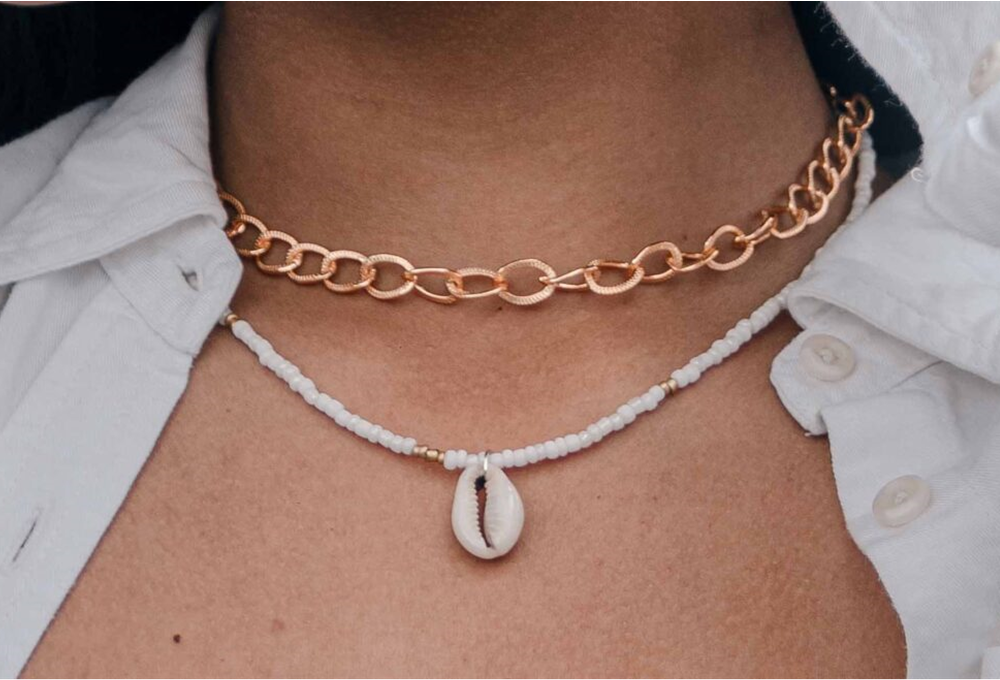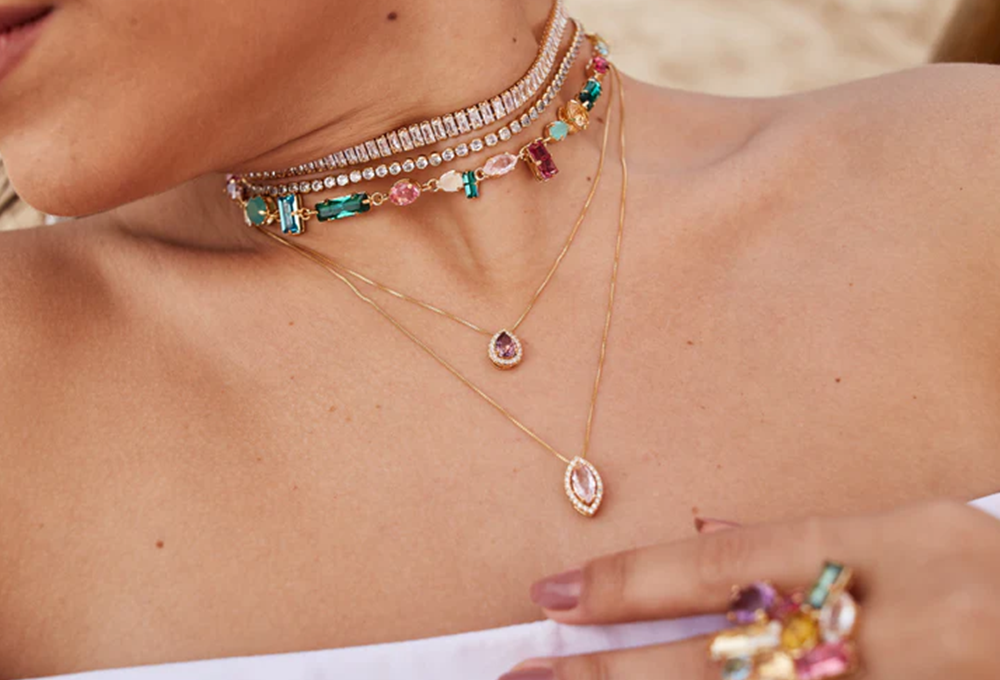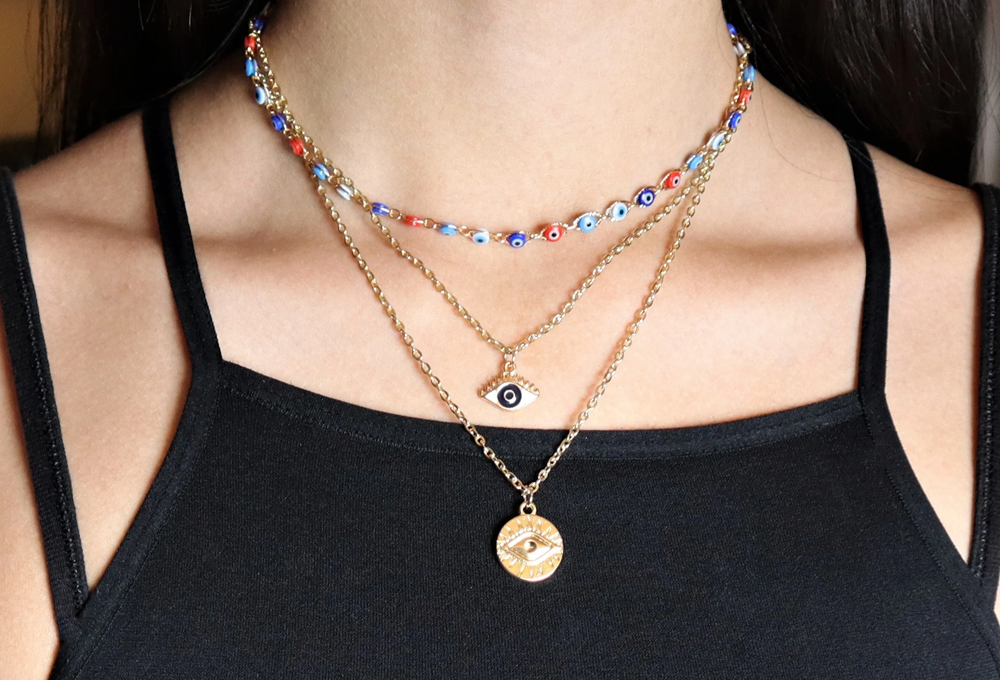The necklace is one of the women’s favorite decorations. Our common necklaces include platinum necklaces, pearl necklaces, gold necklaces, etc. So what material is good for necklaces? The advantages and disadvantages of necklaces made of different materials are introduced below.
1. Jewelry Necklace
Compared with gold and silver necklaces, jewelry necklaces have stronger decorative effects and richer color changes. Jewelry used as necklaces generally include diamonds, pearls, ivory, agate, coral, turquoise, etc. The darker and purer the color, the higher the clarity, and the fewer internal impurities, the gemstone necklace is generally of superior quality. Such a gemstone necklace will be glamorous when worn on the body.

2. Gold and silver necklace
Gold and silver necklaces are the main varieties of necklaces. Now common gold necklaces are 24k, 18k, and 14k. There are two types of silver necklaces: 92.5% fineness silver and gold-plated silver. As far as styles are concerned, many gold and silver necklaces are very fashionable and affordable, but gold and silver are easy to fade, so when buying gold and silver necklaces, you must pay attention to good maintenance.
3. Platinum necklace
Platinum Necklace Necklace is generous, small, warm, and romantic, and it has attracted many women. Together with the bending and coiling of platinum, it forms different styles and endless interesting shapes. The overall style is simple, elegant, and elegant, and the styles all reveal feminine delicacy, elegance, and wisdom.

4. Imitation gold necklace
Imitation gold necklaces are made of materials ranging from copper, zinc, and aluminum to plastic and other non-metals. It has the characteristics of many styles, new shapes, and low prices.
5. Ordinary material
Fashion necklaces are popular in the world, and most of them are made of very common materials. As gold-coated necklaces, necklaces made of plastic, leather, glass, silk rope, wood, low-melting alloys, etc., are mainly for fashion matching, emphasizing novelty, strangeness, beauty, and popularity.


